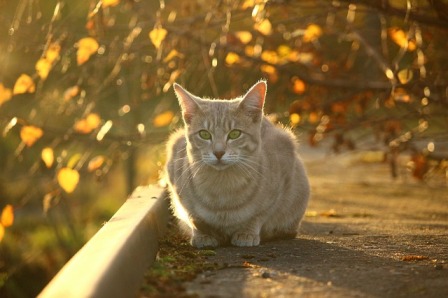How Food Can Help a Cat with Hairballs
How Food Can Help a Cat with Hairballs
Hairballs in cats are a regular part of the cat’s experience. They usually appear once a month, when a cat tries to get rid of it by vomiting. However, if the cat brings up hairballs more than twice per month, it needs help and immediate vet checkup. On the other hand, some cats have problems with coughing hairballs up from their stomach. This situation can cause constipation, bloating, and lethargy in cats. It can also lead to a serious complication. Even though the majority of cats know how to heal themselves from hairballs by eating special sort of grass, many other cats can seriously suffer from bringing hairballs up. It is frequently the case in long-haired cats that are not regularly brushed. Brushing is very important in hairball prevention because it removes excessive hair from the cat’s coat. But, cat experts recommend combing the cat, rather than brushing it. The reason for this lies in a fact that combing goes deeper into the fur and removes the shed hair thoroughly from its coat. To learn more about how to help a cat with hairballs, the article “How Hairball Control Cat Food Works” explains how the specially designed hairball control food for cats works.
How Food Can Help a Cat with Hairballs
Hairball Control Food vs. Regular Food
Many brands have begun marketing a special food under “hairball control” and there are many questions as to the difference between this and regular food. In most instances, what makes a food “hairball control” is simply an increased supply of vegetable fiber, which helps the stomach digest its contents and move waste through the intestines more efficiently. Where the average fiber content of regular cat food hovers between one to two percent, hairball control cat food may have as much as eight percent fiber.
Sometimes, further ingredients are added such as taurine, which aids the heart and eyes. Hairball control cat food is often low in fat. This helps lessen the insoluble substances in the stomach and intestines that may lead to indigestion or constipation.
Although hairball control food has shown as effective in hairball prevention, many owners are wondering whether this kind of food can force cats to visit their litter box more frequently and eat more. According to veterinarians, fiber, which is the essential part of hairball control food, is responsible for increased elimination. On the other hand, this food contains soluble and insoluble fiber that will cause a cat to drink more water. Fiber will also help a cat with digestion and should not increase the cat’s appetite. Hairballs form when hairs from the self-grooming reach digestive system and mix with undigested food. In this way, they can block the digestion in cats and lead to serious problems. To avoid this, fiber from hairball control food decomposes hairballs and makes all parts of the digestive system passable without causing the cat to gain weight.











My 4 year old long haired cat vimits hairballs once a day…is that normal?